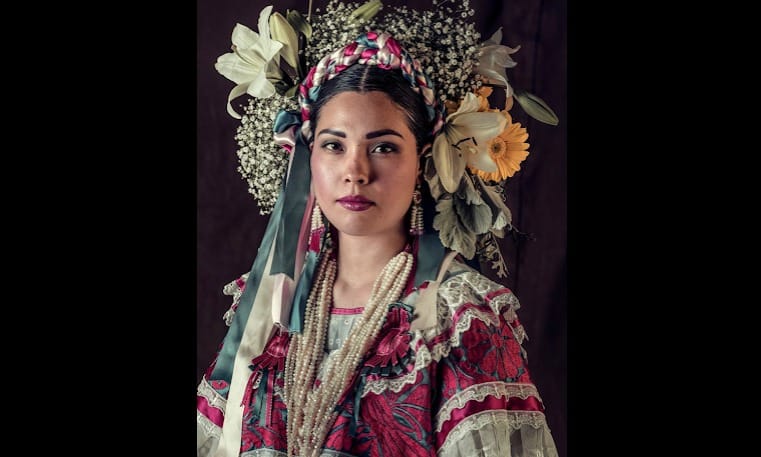See The Stunning Portraits This Photographer Took Of People From The Most Endangered Indigenous Tribes In The World
We’ve come to a moment in our culture where we’re reckoning with the mistakes our ancestors made in the past. The fallout from widely-accepted historical practices of misogyny, racism, and colonialism is persistent. It’s up to people in positions of power to use their privilege to better society. Colonialism, in particular, has an especially negative lingering global impact–largely because it has been so insidious. Only recently have colonists like Christopher Columbus been widely condemned for the violent and inhumane methods they employed to conquer and oppress indigenous peoples.
English photographer Jimmy Nelson has spent his entire career travelling the world and documenting the unique lifestyles of various indigenous tribes across the globe. In his book “Homage to Humanity”, he compiles his photographs in a vibrant and informative tome that shows its reader the commonalities among all of us.

via @jimmy.nelson.official/Instagram
Throughout his 30-year career, Nelson traveled to countless countries, including Peru, Ecuador, Thailand, Mexico, Sudan, China and Papua New Guinea.
While travelling, Nelson had the opportunity to take portrait photographs of people from indigenous ethnic tribes throughout Latinidad, like the Oaxaca, the Zapotecs, and the Chichimeca. The portraits are stunning for their detailed and tender depictions of various cultures in full ceremonial garb, the beauty of their unique traditions on proud display for the camera.
One photograph shows a woman from the Zapotec tribe in Mexico, her face painted as the “Lady of the Dead”. Another shows a young girl from the the last Inca community in Peru, the Q’eros tribe, wrapped in K’eperina blanket, staring defiantly at the camera. “[My job] is about being open to the world,” says Nelson. “With no judgement, no basis and nothing but love for other places and other human beings”.

via @jimmy.nelson.official/Instagram
Nelson’s life goal is to document the lives of indigenous tribes throughout the world before their ways are permanently eradicated through modernization.
Indigenous peoples are defined as “ethnic groups who are the original or earliest known inhabitants of an area,” before the land has been “settled, occupied or colonized” by other inhabitants. Indigenous tribes are rare because of how pervasive and all-consuming colonialism has been in recent history–particularly in North and South America. Philosophies like “manifest destiny” convinced (largely white) populations that it was their duty and right to settle lands that native populations had been living on for centuries.
According to worldbank.org, there are 370 million indigenous peoples living in over 90 countries throughout the world. And although they only make up 5 percent of the global population, their numbers account for 15 percent of those living in extreme poverty. Not only that, but due to the wealth of generational knowledge they have about how to tend to their lands, indigenous peoples are estimated to safeguard 80 percent of the world’s biodiversity.
Luckily, in 2007, the United Nations passed the Declaration on the Rights of Indigenous People, a guide for its members on the collective rights of indigenous peoples

via @jimmy.nelson.official/Instagram
According to the United Nations, the UNDRIP “emphasizes the rights of Indigenous peoples to maintain and strengthen their own institutions, cultures and traditions, and to pursue their development in keeping with their own needs and aspirations”. The declaration was a necessary step in righting the wrongs of the colonizing forces of the past who believed that Western and European ideals were superior to the ways of native populations.
In an interview with The New York Post, Nelson describes how spending time with people who are not as deeply exposed to the hustle and bustle of modernization has changed his outlook on life. “We’re always thinking about the future.” he said. “But [these tribes] very much live in the present and in the moment, it’s wonderful.”

via @jimmy.nelson.official/Instagram
Nelson hopes that his book of photographs will humanize the people of indigenous tribes so that his readers recognize that they are no different from the rest of the world.
Nelson’s photos are not only featured in a book, but also digitally in the form of his “Jimmy Nelson” app. Readers can use the app to scan over every image in his “Homage to Humanity” book, which will give the reader access to exclusive behind-the-scenes content that includes interviews and short videos. He hopes this feature will give viewers an insight into his process behind creating his artwork. You can see more of his artwork here.
As for the rest of the world it would be wise for everyone to take a page out of Nelson’s book when it comes to his views on humanity. The photographer is passionate about connecting with humans from all colors, creeds, and walks of life. “I think it’s amazing how close you can get to people without talking to them,” he says. “We speak different languages but that doesn’t seem to matter. We are all the same.” Never have there been truer words to live by.




